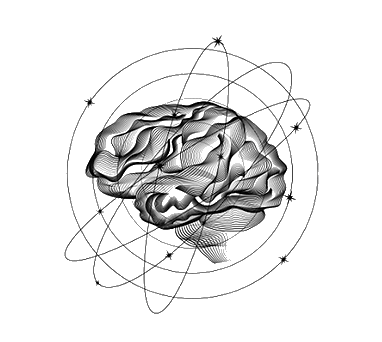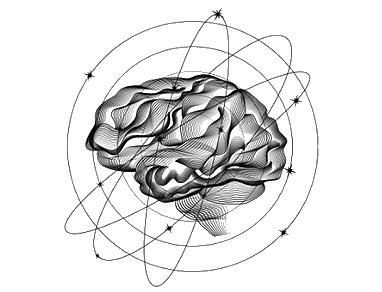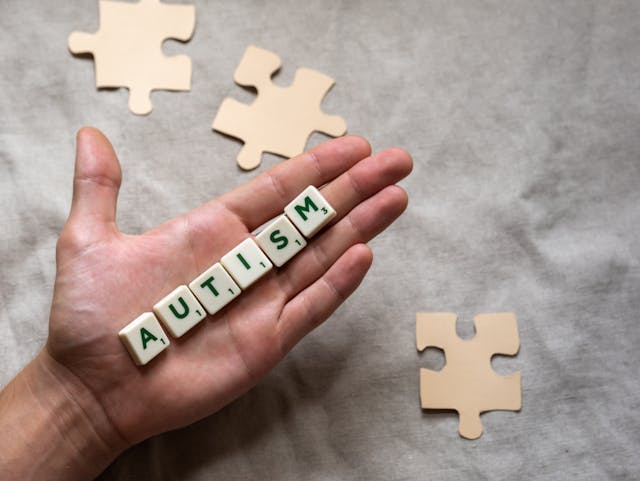What is Autism? By Evolve Psychiatric Services in Longwood FL
What is Autism – First off, thanks for reading this blog article by Evolve Psychiatric Services. We are here to help with anxiety, depression, ADHD, sleep disturbance, bipolar disorder, PTSD, autism, or other chronic mental health conditions. Hopefully, you find this blog article helpful for yourself or for understanding a loved one’s journey when it relates to autism.

Did you know that autism spectrum disorder (ASD) is a complex developmental condition involving persistent challenges with social communication, restricted interests, and repetitive behavior? It is true. While autism is considered a lifelong disorder, the degree of impairment in functioning because of these challenges varies between individuals with autism.
Table of Contents
What Is Autism?
Autism, also called autism spectrum disorder (ASD), is a complicated, lifelong condition that includes problems with communication and behavior. It’s a spectrum disorder, which means it affects people in different ways and in varying degrees. It usually appears by age 2 or 3.
People with autism have trouble with communication. They have trouble understanding what other people think and feel. This makes it hard for them to express themselves, either with words or through gestures, facial expressions, and touch.
People with autism may have problems with learning. Their skills might develop unevenly. For example, they could have trouble communicating but be unusually good at art, music, math, or things that involve memory. Because of this, they might do especially well on tests of analysis or problem-solving.
More children are diagnosed with autism now than ever before. But the latest numbers could be higher because of changes in how it’s diagnosed, not because more children have the disorder.
What is the difference between “Low-functioning Autism” vs. “High-functioning Autism”
Every person with autism will be affected differently. Some people have a more challenging time with social, learning, or communication abilities. They may need help with everyday tasks and in some cases aren’t able to live alone. Many people call this “low-functioning autism.”
“Low-functioning autism” is typically used to describe individuals who require significant support in daily living skills and may have limited communication abilities. These individuals may require assistance with activities such as dressing, grooming, and feeding.
“High-functioning autism” isn’t an official medical term or diagnosis. It’s an informal one some people use when they talk about people with autism spectrum disorder, or ASD, who can speak, read, write, and handle basic life skills like eating and getting dressed. They can live independently. Therefore, other people may have autism with less obvious symptoms. They often do well in school and have fewer problems communicating. People usually call this “high-functioning autism.”
It is important to mention that children with high-functioning autism have similar abilities to his/her neurotypical peers. This is especially true when the child receives early intervention therapies. Children diagnosed with low-functioning autism need more support. They struggle to communicate and manage their behaviors.
Please note using the terms “high-functioning” and “low-functioning” can be offensive. It’s best to avoid them. To talk about how autism affects someone, you can instead use terms like “more significant” or “less significant.”
What the three levels of ASD?
Autism disorder is a spectrum and contains three levels:
- Level 1 — Individuals with level one autism have mild symptoms which have minimal interference with their daily lives.
- Level 2 — Individuals with level two autism need some support in working on communication, social skills, and behavioral deficits.
- Level 3 — Individuals with level three autism will require extensive support, which might involve intensive therapy.
Diagnosis of Autism Spectrum Disorder – What is Autism?
Early signs of this disorder can be noticed by parents/caregivers, grandparents, or pediatricians before a child reaches one year of age. However, symptoms typically become more consistently visible by the time a child is 2 or 3 years old. In some cases, the problems related to autism may be mild and not apparent until the child starts school, after which their deficits may be pronounced when amongst their peers.
Social communication deficits may include:
- Decreased sharing of interests with others.
- Difficulty appreciating their own & others’ emotions.
- Aversion to maintaining eye contact.
- Lack of proficiency with use of non-verbal gestures.
- Stilted or scripted speech.
- Interpreting abstract ideas literally.
- Difficulty making friends or keeping them.
Restricted interests and repetitive behaviors may include:
- Inflexibility of behavior, extreme difficulty coping with change.
- Being overly focused on niche subjects to the exclusion of others.
- Expecting others to be equally interested in those subjects.
- Difficulty tolerating changes in routine and new experiences.
- Sensory hypersensitivity, e.g., aversion to loud noises.
- Stereotypical movements such as hand flapping, rocking, or spinning.
- Arranging things, often toys, in a very particular manner.
Parent/caregiver/teacher/grandparent concerns about the child’s behavior should lead to a specialized evaluation by a developmental pediatrician, pediatric psychologist, child neurologist, and/or a child and adolescent psychiatrist.
This evaluation involves interviewing the parent/caregiver, observing, and interacting with the child in a structured manner, and sometimes conducting additional tests to rule out other disorders. In some ambiguous cases, the diagnosis of autism may be deferred, but an early diagnosis can greatly improve a child’s functioning by providing the family early access to supportive resources in the community.
Is Autism a Disability?
Autism is a neurological developmental disability with an estimated prevalence of one to two percent of the American and worldwide population. The diversity of the disability means that each person’s individual experience of autism and needs for support and services can vary widely.
Thus, an autistic individual may struggle to interpret and use nonverbal cues such as facial expressions, body language, gestures, and eye contact. Difficulties in understanding and appropriately responding to nonverbal cues can impact their ability to build relationships and understand others’ emotions.
Remember that the diversity of the disability means that each person’s individual experience of autism and needs for support and services can vary widely. For this reason, the clinical diagnosis in the American Psychiatric Association’s DSM-5 uses the term autism spectrum disorder. However, all children, youth, and adults on the autism spectrum experience a common atypical neurological profile with several key traits. Namely, they have atypical language and communication, social interaction, motor coordination and sensory processing, and executive functioning.
Americans on the autism spectrum experience substantial challenges in attaining competitive integrated employment opportunities that match their interests, gifts, and talents. They experience substantial unemployment and underemployment, according to the research literature. Adults and youth on the autism spectrum also experience barriers to completing postsecondary education and training opportunities, accessing healthcare, and attaining integrating community living.
Understanding the Importance of Social Skills Training for Individuals with Autism
Navigating social situations can be quite a challenge for people with autism. They often find it hard to pick up on social cues, maintain eye contact, start conversations, or understand nonverbal communication. This can lead to feelings of loneliness and frustration.
Social skills training is a special kind of therapy designed to teach those with autism how to interact better with others. This can involve role-playing, group activities, or one-on-one coaching sessions.
One of the main advantages of social skills training is that it can greatly improve a person’s quality of life. As they learn to handle social situations more effectively, people with autism can gain confidence and feel more at ease when interacting with others.
This can open up new opportunities for friendships, romantic relationships, and even jobs.
Better social skills can also lead to improved academic performance. Schools often require students to work together in groups or take part in class discussions. By developing stronger social skills, people with autism can engage more fully in these activities and excel academically.
Another plus of social skills training is that it can help reduce anxiety and stress. Social situations can be overwhelming for those with autism, sometimes causing anxiety or even panic attacks. Learning how to manage these situations more effectively through social skills training can help lower overall stress and anxiety levels.
In a nutshell, social skills training is a valuable resource for helping people with autism improve their lives. By offering targeted support and interventions, we can empower them to develop the skills they need to thrive socially and reach their full potential.
Strategies for Managing Sensory Overload
Dealing with sensory overload can be a real struggle for people with autism. Thankfully, there are a bunch of ways to help handle this problem and lessen feelings of worry or stress.
A great idea is to use noise-cancelling headphones. These headphones do a fantastic job of blocking out loud or annoying sounds, creating a more soothing environment for those with autism. In the same way, weighted blankets can offer a cozy and secure feeling, which can help keep overwhelming feelings at bay.
Another helpful approach is to make a sensory-friendly space at home or in school. This could mean turning down bright lights, using natural materials like wood or cotton, and keeping things neat and tidy. By making a more predictable and calming space, people with autism might find it easier to manage their symptoms.
It’s also super important to team up with healthcare professionals to figure out any specific things that cause sensory overload and come up with focused ways to tackle them. For instance, if certain textures are extra tough to handle, an occupational therapist might suggest specific exercises or activities to get better at processing those sensations.
All in all, taking care of sensory overload is a key part of making life better for people with autism. By pinpointing the exact triggers and creating focused solutions, we can help them navigate the world more successfully and boost their overall happiness.
Keeping Your Family Member with Autism Safe
One of the things that worries families most is keeping their autistic family member(s) safe. There are so many obstacles and issues that families of typical children don’t even have to consider. Autism symptoms like self-harm, head-banging, wandering, eloping, hiding, and running are just a few things that are far more prevalent in autistic kids. Safety-proofing your home and your child’s surroundings is imperative.
Kids with autism are often less aware of safety concerns. Many low-functioning children with autism have no idea that something is dangerous and are unable to understand the implications of their actions. When they get overwhelmed and triggered, they can run into the street without even noticing the cars coming.
According to the National Autism Association, “Autism itself does not affect life expectancy, however, research has shown that the mortality risk among individuals with autism is twice as high as the general population, in large part due to drowning and other accidents.”
A recent study revealed that over 50% of children with autism wander or elope. Several parents report that despite extreme safety precautions being in place, their child has found a way to escape from their home or school. This issue is amplified when your autistic child is nonverbal (40% of children with autism). Simple things like going to school, riding a school bus, going to the mall, and playing in the park require extreme care and cause parents a tremendous amount of stress and worry.
Many parents and grandparents who are handling a loved one with autism want a way to keep the autistic child or grandchild they love safe. Not only did they understand the need for accurate and reliable GPS tracking. Families can also address other concerns specifically by adding features to electronics when available that can add a communication feature that doesn’t require the child to answer or press anything, an alarm to find a hiding child, sensory-sensitive wearing options, and much more are being developed to assist family members in times of crisis.
Identifying the signs of autism early in life can lead to more targeted support, as these individuals may face profound challenges in daily life, often related to severe autism. Conversely, recognizing signs of autism and signs of spectrum autism is crucial, as these symptoms may be subtler but still significantly impact an individual’s ability to navigate social and academic environments.
When considering the full range of the autism spectrum, questions arise such as ‘Can individuals with level 2 autism live independently’ or ‘Is level 3 autism high-functioning?’ These inquiries highlight the importance of understanding the diverse capabilities and needs of individuals with autism. The goal is always to maximize independence and improve the quality of life, tailored to each person’s unique situation.
Understanding the various therapies for autism
A child’s early development age is crucial for their future learning and growth. As a parent or grandparent, you are responsible for supporting your child or grandchild as they develop. For all children with autism, early intervention and diagnosis have been shown to have a significant impact on the child’s development and increase the chances of successful outcomes.
Here are some of the therapies that can help children with autism:
Augmentative and Alternative Communication (AAC)
Augmentative and Alternative Communication Therapy or AAC therapy is a therapy used for children with autism who face difficulty in communicating. Here, the children are taught to use different forms of communication such as sign language, a Picture Exchange Communication System (PECS), or a Speech-Generating Device (SGD).
Speech-Language therapy
Speech-language therapy helps children with autism who need to develop their communication skills. It is designed to facilitate the coordination of the different mechanics of speech and help children communicate more effectively.
Occupational therapy
Occupational therapy helps children with autism learn and integrate everyday activities such as personal hygiene.
Sensory integration therapy
Sensory integration therapy helps children with autism adapt to different kinds of sensory disturbances and react calmly outside of the therapy setting.
Applied Behavioral Analysis (ABA)
Applied Behavioral Analysis Therapy simply called ABA therapy is considered the golden standard of therapies for children diagnosed with autism. This therapy focuses on improving the child’s behaviors around social skills, play skills, and communication skills and can help children overcome problematic behaviors such as self-injury or aggression.
All therapies are tailored to the unique circumstances of each individual and can help with all levels of functioning. When available, in-home therapies, provide a safe, familiar, and comfortable for you and your child.
Thanks for reading this blog article on “What is Autism?”, this blog article was prepared by Evolve Psychiatric Services located in Longwood, Florida.
Evolve Psychiatric Services wrote this article to help you better understand ‘What is Autism?’. If you still have questions, feel free to call us and ask our caring staff members who are caring for you or your family member. Follow us on Instagram, and Facebook now! Remember we love delivering compassionate care and we are here to help with anxiety, depression, ADHD, sleep disturbance, bipolar disorder, or other chronic mental health conditions. Again, thanks for reading this blog article.

